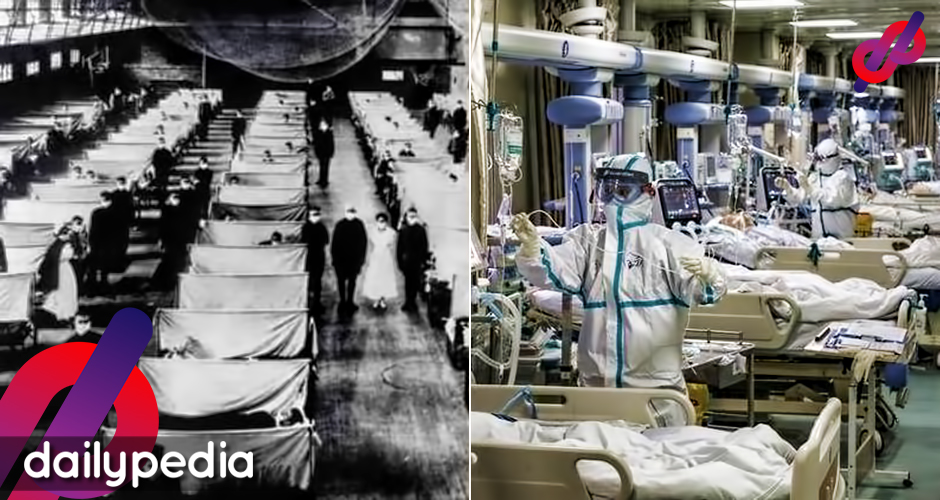Sean Illing, an Interviews Writer for Vox had the chance to interview John M. Barry, an American author and historian who has written books on the Great Mississippi Flood of 1927 and the Influenza Pandemic of 1918, to get his thoughts on the effects of lying during a pandemic.

The 1918 Influenza pandemic, also known as the Spanish Flu killed 17 million to 100 million people, and one of the main reasons for its destructiveness was the concealment of the truth by the government from the public.
In his book about the Spanish Flu, Barry said that lying about the severity of the pandemic only created more fear, more isolation, and more suffering for everyone.
In a recent column for New York Times, Barry wrote, “Trust in authority disintegrated, and at its core, society is based on trust. Not knowing whom or what to believe, people also lost trust in one another. They became alienated, isolated. Intimacy was destroyed.”
In a phone interview, Illing was able to get the author’s thoughts on whether the same mistakes are being repeated today.
Barry thinks that not a single pandemic in the past comes close to what COVID-19 is doing today. The 2009 H1N1 outbreak wasn’t as bad as people thought it was going to be.
“So nothing we’ve seen since 1918 even comes close to what’s happening. If this is merely a once-in-a-generation virus, we’ll be lucky.”
The obvious distinction between the Spanish Flu and COVID-19 is the demographic.
“In 1918, the overwhelming majority of people who died were 18 to 45. Maybe two-thirds of the deaths were roughly in that age group.”
People who were 65 and older at that particular juncture probably already experience some kind of virus when they were younger, and might have built up greater protection from the Spanish Flu when it came.
“Back in 1918, well over 90 percent of the excess mortality was in people younger than 65. So obviously the elderly in 1918 had experienced a mild virus in their youth that was close enough to the 1918 virus that they had a lot of protection against it from natural immunity.”
The incubation period between both viruses is also a major difference. A person infected with the Spanish Flu would already show symptoms after two days, while the COVID-19 can go much longer than that.
“Influenza’s average incubation rate was two days, almost never longer than four. The average for the coronavirus is more than twice as long and can stretch quite a bit longer than that, which is both a good and bad thing.
“The good thing is it allows time to contact, trace, isolate, and things like that, which was almost impossible during the influenza epidemic.”, Barry said. “The bad thing is that that means this virus may stretch out over a much longer period of time and infect more people. It seems to be considerably more contagious than influenza.”
Another good thing is that the Spanish Flu was much deadlier than the current coronavirus.
“The case fatality rate seems much lower than the 1918 influenza. The fatality rate in 1918, in the West at least, was about 2 percent. In other parts of the world, it was much, much higher.
“That’s how we ended up with 50 to 100 million total deaths in 1918.”
The biggest mistake during the 1918 pandemic was the lies that the government was telling the public, along with downplaying the severity of the Spanish Flu. The government cared more about winning the war, and the concealment of the truth just made things worse.
“The government lied. They lied about everything. We were at war and they lied because they didn’t want to upend the war effort. You had public health leaders telling people this was just the ordinary flu by another name. They simply didn’t tell the people the truth about what was happening.”
When people died immediately after exhibiting symptoms, the public knew that this wasn’t just an ordinary flu unlike what the government was saying.
“People noticed pretty quickly what was up when their neighbors started dying 24 hours after symptoms first appeared. People were in the streets bleeding out of their noses, bleeding out of their mouths, bleeding out of their eyes and ears. It was horrific. Everyone understood very quickly that this was not an ordinary flu.”
The lies created distrust in the people, and they didn’t know what to do.
“People lost faith in everything — in their government, in what they were being told, in each other. It just isolated people even further. If trust collapses, then it becomes everyone for themselves, and that’s the worst instinct in a crisis of this scale.”
People did not know what to believe. The government eventually decided to tell the truth, but damage had already been done, and all was too late.
“The lack of trust made it harder to implement critical public health measures in a timely way, because people just didn’t believe what they were being told. And by the time the government was forced to be transparent about the situation, it was mostly too late. The virus was already widely disseminated.”
“So the lying and the lack of trust cost a lot of lives,” he added.
A scientist even said that the Spanish Flu could have wiped out civilization. Barry says that people even starved to death because others were too scared to even get close to them.
“The Red Cross reported instances of people starving to death in rural communities because everybody was afraid to bring them food — the panic and the fear was that intense. It stretched society to the absolute brink.”
Barry thinks it’s better to tell the truth than to make people think of the unknown.
“My own view is that people can deal with reality and the truth a lot better than they can deal with the uncertainty. If you’re watching a horror movie, your imagination always makes the monster more scary. Once the monster appears onscreen, no matter how horrible, it’s less scary once it’s concrete.
“This is why I hate the phrase ‘risk communication,’ because it implies managing the truth. In my view, you don’t manage the truth. You tell the truth.”
Fox News and President Donald Trump have also been downplaying the coronavirus. President Trump sees himself as a cheerleader for the US, which is why he kept on downplaying the virus to not cause panic. This in turn made things much worse for the US, which recently experienced the greatest economy in American history under the leadership of President Trump.
“The bizarre thing is that it was always in Trump’s self-interest to be candid. There’s no doubt he was being told the cold, hard truth about the situation behind closed doors. But he minimized it publicly, and that cost us in ways we can’t really quantify yet.”
The collective response now is much better than it was in 1918.
“Well, in 1918, you couldn’t really say there was a collective response. It varied so much from city to city.”
COVID-19 might actually do more damage in the future.
“But it remains an open question whether we will collectively meet this challenge. We’re only at the beginning of this thing.”
Barry isn’t certain that the US can do what South Korea has done, because a lot of things were done in the wrong manner.
“We’ve botched the early testing, and it’s not clear the public has responded seriously enough to the calls for social distancing. But things are changing quickly. What the public does moving forward, how much it complies with the recommendations of public health experts, is going to determine how bad this gets and how fast. Countries like South Korea have managed to beat this back pretty effectively. I don’t know if we’ll have the same success.”
Similarly, China lied a lot about COVID-19, which cost thousands of lives. The coronavirus most likely came from an animal market in Wuhan, a city with around 11 million residents.
The Chinese government did not disclose the severity of the virus, and when they did, it was also too late. On December 31, a mysterious pneumonia was infecting people that came from a food market in Wuhan. China reported that the first case of this was on December 12, then experts found out that it was much earlier than that.
When January came, it was clear that the virus was transmitted from human to human, unlike what was originally said that it was from an animal to humans. By January 2, various reports suggest that one-third of patients did not even visit the food market in Wuhan. The virus could have been spreading through Wuhan and other places as early as October.
China is responsible for the thousands of deaths, and the millions struggling because authorities decided to hide the truth from the public.
Christopher Dye from the University of Oxford says that at least 700,000 could have been spared from the virus had China told the truth at the onset of the spreading of COVID-19.
The Private Hospitals Association of the Philippines (PHAP) recently came out with an announcement saying that 21 Filipino doctors have succumbed to the virus. Unfortunately, most of the deaths were caused by patients lying about their travel history.
PPE (Personal Protection Equipment) supply is still a problem for most hospitals.
Rustico Jimenez, president of PHAP, said, “‘Wag naman lahat government hospitals lang ang bigyan nila ng PPE.
“Marami silang sinasabi na dumating na pero actually walang nakukuha ‘yung private hospitals, private consultants tayo, we buy our own kaso wala ring makuha,” he added.
The lack of PPEs is actually a worldwide problem, not just in the Philippines.
Lying can only make things worse, as proven time and again.


